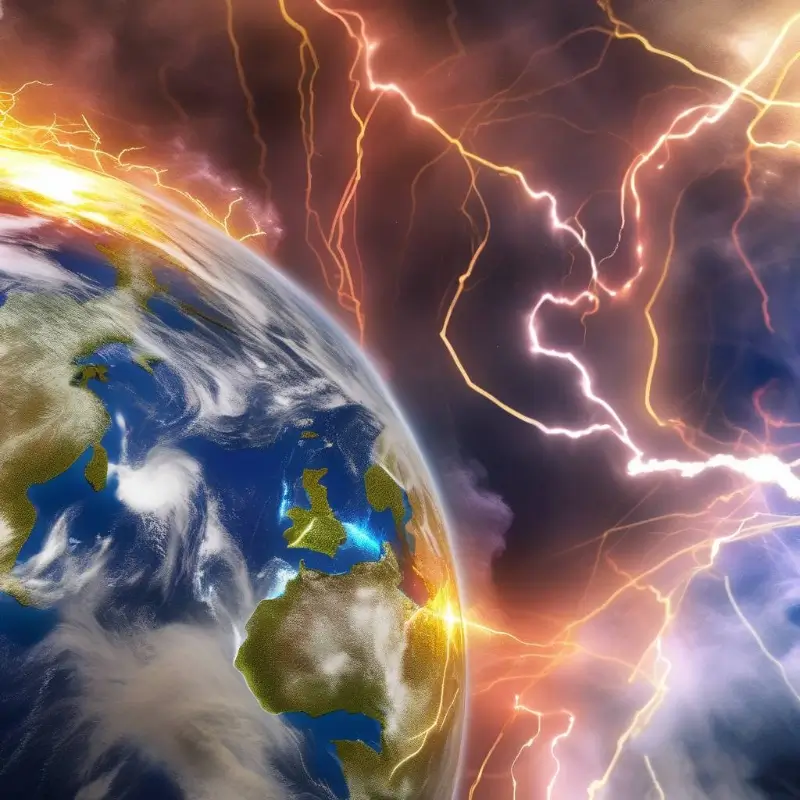Why is there an El Niño?
El Niño is a complex climatic phenomenon in the equatorial Pacific Ocean, which is mainly caused by abnormally high sea temperatures in the eastern equatorial Pacific Ocean. In general, wind systems in the equatorial region of the Pacific Ocean cause warm water to accumulate in the western Pacific Ocean and cold water to the equator in the eastern Pacific. However, during El Niño, the weakening of trade winds leads to a decrease in the accumulation of warm water in the western Pacific, which flows eastward, increasing the temperature of the waters in the eastern Pacific.
This phenomenon is often accompanied by changes in tropical rainfall patterns, affecting the global climate. The occurrence of El Niño is related to a variety of factors, such as the rotation of the Earth, atmospheric circulation, and ocean temperature, in which the interaction between the atmosphere and the ocean plays a key role.
Under normal conditions, trade winds in the equatorial Pacific Ocean blow warm and moist air to Asia and Australia, and cold and moist air to the west coast of the Americas. However, during an El Niño event, this change in wind direction and force can lead to significant changes in the climate patterns of the tropical Pacific. Abnormally high sea temperatures in the eastern Pacific Ocean alter atmospheric circulation, leading to climate anomalies on a global scale, such as drought on the west coast of the Americas and increased rainfall in Asia and Australia.
El Niño occurs over a period of roughly 2 to 7 years, with some being weak El Niño and some being strong El Niño. The impact of this phenomenon on the global climate is multifaceted, including the increase in extreme weather events, such as heat waves, torrential rains, floods, droughts, etc.
At present, scientists can predict the occurrence and intensity of El Niño through climate models and observational data analysis, and help governments prevent extreme weather events and mitigate the damage they may bring. In the context of global warming, El Niño events are likely to become more frequent and intense, which requires greater cooperation among the international community to improve resilience to climate change.
The El Niño phenomenon occurs due to the natural variation of the Earth’s coupled atmosphere-ocean system. Specifically, it is an anomaly in the air-sea interaction in the tropical Pacific Ocean, which typically manifests itself as:
- Equatorial easterly winds weaken or reverse: Under normal conditions, easterly winds (i.e., southeast trade winds) that prevail in the eastern tropical Pacific (near the coast of South America) push warm surface waters westward, raising water temperatures in western waters and causing deep cold water to rise to the surface in the east, resulting in cool sea surface temperatures. However, during El Niño, the southeasterly trade winds weaken and even occasionally reverse, allowing warm water to flow eastward.
- Abnormal SST Increases: The eastward flow of warm water has led to anomalous increases in sea surface temperatures in the eastern and central Pacific Oceans, altering climate patterns in the region, and uneven ocean heat distribution affecting atmospheric circulation and, in turn, global climate.
- Coupled ocean-atmosphere feedback: The eastward propagation of warm water not only changes ocean surface temperature, but also affects the temperature and humidity distribution of the atmosphere, leading to changes in atmospheric circulation patterns, including changes in rainfall patterns, such as flooding in parts of South America and possible droughts in places such as Southeast Asia and Australia.
- La Niña-El Niño oscillation: El Niño is part of the natural fluctuations within the Earth’s climate system and is the opposite of La Niña, which together form the El Niño-Southern Oscillation (ENSO), a quasi-periodic climate oscillation.
In conclusion, the occurrence of El Niño is the result of complex interactions within the Earth’s climate system, reflecting the strong coupling effects of atmospheric and ocean dynamics at different spatial scales.



